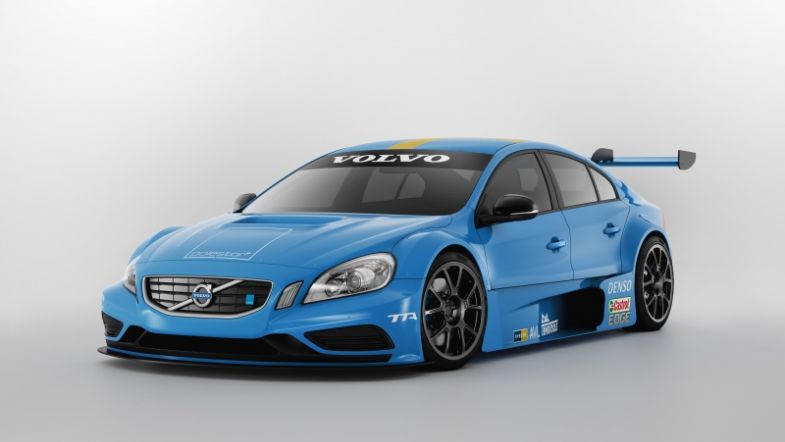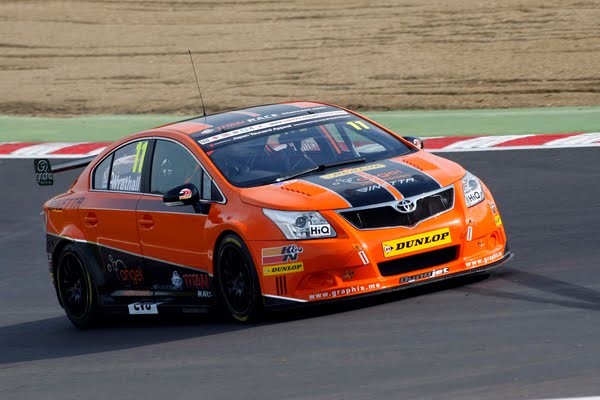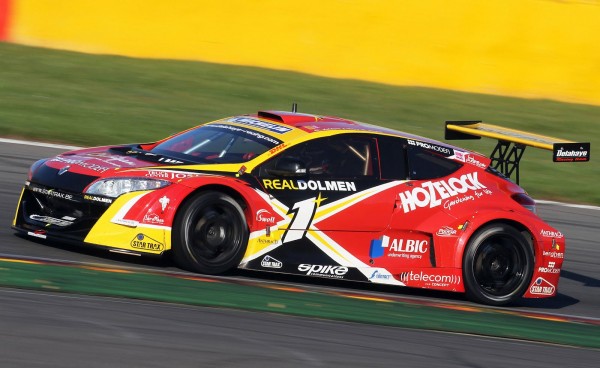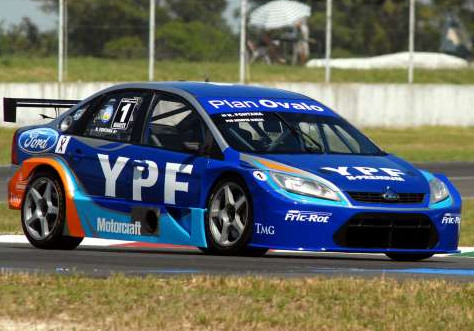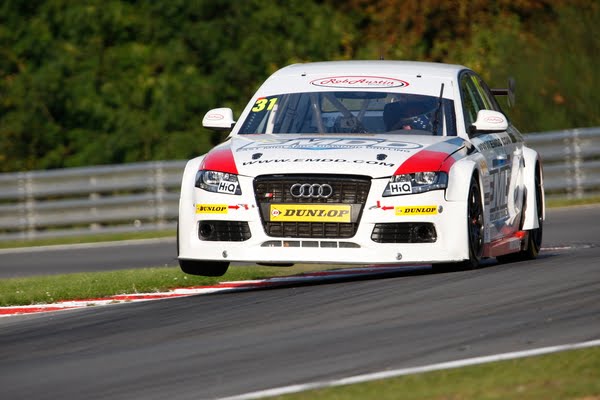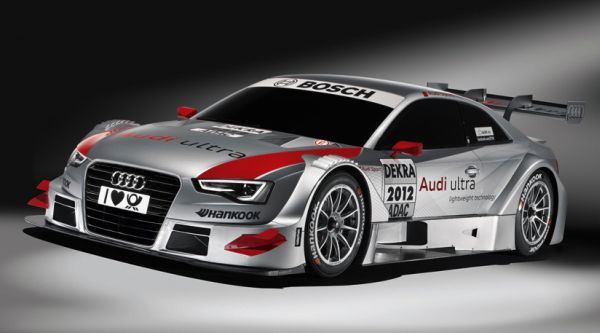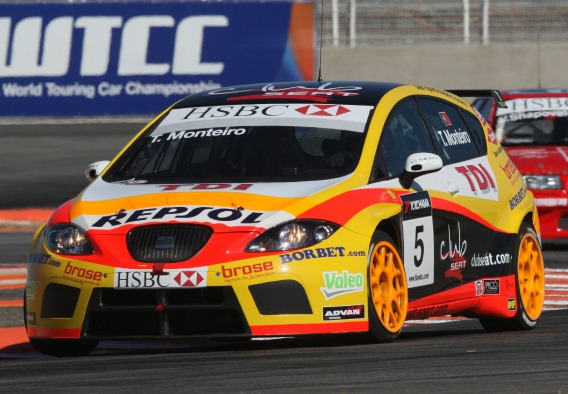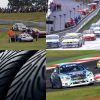When is a touring car not a touring car?
The second of the new Swedish championship the TTA’s new cars was unveiled on Monday, the Volvo S60 TTA, which will be driven by accomplished Swedish drivers Fredrik Ekblom, Thed Björk and Robert Dahlgren in the series’ inaugural season.
The TTA is the breakaway series from the Scandinavian Touring Car Championship (STCC), a split which has occurred because of a lot of behind the scenes arguments over balancing measures, weights etc. and a lack of clarity of the future of the existing technical regulations which the STCC was running to, which was the FIA’s Super 2000 regulations.
The STCC management decided to follow the British Touring Car Championship’s route, with what they decided to call the Next Generation Touring Car (NGTC). Many of the key teams in the STCC wanted something a little different. They wanted all cars to be rear-wheel drive, larger engines and also wanted a significant reduction in cost, even more so than that which was promised by NGTC.
One of the options which was almost the solution was a mix of the two; the cars would still be mostly NGTC but would have a larger engine than the BTCC’s two-litre turbocharged units, and all cars would be mandated to be rear-wheel drive (in the initial announcement, the plan was for all BTCC cars to be front-wheel drive, but this has since been relaxed).
When the two sides couldn’t agree, four of the STCC’s teams announced their intentions to leave and form a new championship. They would adopt cars which fitted their plan, larger engined, rear-wheel drive silhouettes, very similar to those already being used in the Belgian Touring Car Series, and which had been pioneered in the FFSA French Touring Car Championship between 2001 and 2005.
The primary backlash which is thrown against the TTA appears to be that these aren’t proper touring cars. To follow that argument to its conclusion, you’d have to first start from the definition of what a touring car actually is. And I wish you the best of luck on your search for that; I’m going to look for the Holy Grail, I fancy my chances are still better than yours.
Quite simply, there is no definition for what a ‘true’ touring car is. Even if it was in the dictionary, the compilers would probably not be qualified to assess it, and the bodies that are so-qualified will still likely change it to meet their own interests as it suits them. In effect, the most official definition of a touring car is the one which the FIA would use for its touring car championships, and that’s been Super 2000 since 2002.
At its most simplistic level, a touring car is one that is based on an ordinary road car. Then that leaves you to define ordinary, but referring to the FIA’s Super 2000 technical regulations for a reasonable example, they specify that the car on which it’s based must have been production for 12 consecutive months and that a minimum of 2,500 units have been produced.
So beyond that, being a mass produced road car, a touring car can pretty much be anything.
TTA and Belgian Sprint Challenge
The TTA, Belgian and Renault Mégane Eurocup cars are the most extracted from the normal production road car, this is certainly true. The cars are built by French firm Solution F (or Renaultsport), and for TTA and Eurocup the engines are based on a 3.5 litre V6 Nissan design. In Belgium, other engine builders can be used. The only similarity to the road car is in appearance, with the body of the car made to look like a representation of the road car, but beyond that there are no similarities to the car on which it’s based.
People are absolutely right to assume that therefore, no one will believe it or enjoy it as a sport – the struggling US-based NASCAR Sprint Cup Series, which uses cars which are old technology with fabricated shells and strategically placed stickers has been a total failure; with poor track attendance, lack of sponsor interest and dire viewing figures. Oh wait…
From the silhouette option which has been taken up by TTA, you can start to impose elements from the real car to make it seem more like a real road car, but at which point to you stop and say that’s it before you’ve basically done nothing but taken the stereo out and put a roll cage in?
TC 2000
The Argentinean TC 2000 series is an interesting example of a touring car championship. One where there are a number of manufacturers involved, at least the Argentinean manufacturers’ marketing budgets are.
The cars use the original shell of the production car, with an extra amount of aerodynamic and bodywork tweaks to make the cars look more like racing cars. The interior however bears little relation to the road car.
From 2009 until now, all the cars have also used the same engine, a 2.2 litre in-line 4 based on Ford’s Duratec engine – no matter what car (Peugeot, Honda, Volkswagen…) they are. This year, they’ll switch to a British-built Radical 2.7 litre V8 engine – which couldn’t be further from the standard engines which would be in the cars they’re ‘representing’.
But I bet they’ll be awesome to watch!
Next Generation Touring Car
With the BTCC, Series Director Alan Gow decided to draw a line somewhere.
The sub-frame, suspension, roll cage and brakes of the NGTC cars are all identical. As is the gearbox, with all cars running an Xtrac 6-speed device, and AP Racing clutch and brakes.
With the engines though, they need to be based on the production engine that is produced by the manufacturer of the car being entered, with the only exception being if a team runs the generic TOCA engine, leased from Swindon Racing Engines. This engine is based on a GM engine, and has appeared in a number of the Vauxhalls where it would normally be found, but as well as in Toyotas, Protons and BMWs in the 2011 season.
Those that build their own engine though, or get a technical partner to build it for them, have to have it based on the car they’re entering.
There are control components in the engine too, specifically around the turbo and the ECU and data logging systems, all of which are Cosworth supplied.
In essence, all that’s left which is absolutely unique for the team to work on is the shell and the engine. Two pretty critical parts of the car of course, but is that enough?
NGTC was also sold to the BTCC teams and the STCC as a lower cost option to Super 2000 – initially touted to be about half the cost of a brand new S2000 car.
As time has gone on the costs of NGTC have crept up. A few team managers now have told me they believe the cost of the NGTC car is comparible with that of S2000, and when you consider than generally teams in the BTCC for the most part compete with second-hand S2000 cars, with only Arena, Team Dynamics and Triple Eight in recent years developing their own vehicles, it does make the financial benefit of the outright cost of the car questionable.
The cars though look good, and in 2013 they’ll have the power turned up which will make them even more impressive to watch. There’s a guarantee of close racing with so little to differentiate between the cars, but at the same time that would probably put off a few manufacturers who may feel they’d be threatened by the independents. In the end, that’s why these rules exist in the first place though. The manufacturers weren’t coming to the BTCC, and to keep the series strong, Gow needed to ensure the independent teams could deliver the show on their own.
Although the costs haven’t dropped as much as hoped, there’s a lot of technical work which has effectively been outsourced, making it a lot easier for new teams to enter the BTCC, and indeed a record number of new teams made the jump and entered the championship last year, with seven new teams taking part.
The DTM
The Deutsche Tourenwagen Masters is considered by many to the be the top touring car championship in the world. Although very much a European based championship, it has a greater mix of nationality of drivers than any ‘national’ series, and only the World Touring Car Championship could probably boast a wider spread.
However, World Touring Car drivers don’t go on to race in Formula 1, it’s very much a one way path with some ex-Formula 1 drivers have turned touring car pros, such as Gabriele Tarquini, Tiago Monteiro. At least with the DTM it’s a two way relationship, with Paul di Resta, Christijan Albers all making appearances in F1. For the most part though, it’s an after Formula 1 affair, with drivers such as Mika Hakkinen, Jean Alesi, David Coulthard, Heinz-Harald Frentzen and Ralf Schumacher all having competed in recent years.
Technically, the DTM is a silhouette championship but on an entirely different cost scale to what the Swedes and Belgians have done. Instead of a spec engine, each of Germany’s finest have developed their own engines, 4.0 litre V8s. All cars are rear-wheel drive, again there are some shared components to drive costs down, and to help restrict the spiralling development costs in recent years, even changes to the aerodynamic packages have been frozen. This year the rules have changed again, and BMW have joined Audi and Mercedes-Benz in Germany’s premier touring car championship…but is it a touring car?
Super 2000
The last of the big classifications left is Super 2000 (Touring). A set of regulations first developed for the 2002 FIA European Touring Car Championship and have been widely adopted throughout the world. In 2003, the then Swedish Touring Car Championship introduced them, and in 2004 the British Touring Car Championship began to integrate them, until they became the dominant class in 2007.
Super 2000 was used in Denmark, until the series folded at the end of 2010 and merged with Sweden. It’s used in the German ADAC Procar Series, in the Dominican Republic, Hong Kong, Asia, and the upcoming Japanese Touring Car Championship plans to use S2000 as its basis from 2013.
Super 2000 regulations are the closest to the normal road car, as the regulations are written from the point of starting with the production car and then opening up various components for upgrades. Homologated parts are ones that are to match those on the production models, whilst free components allow the manufacturer/team to use more bespoke racing parts.
Engines are always from the manufacturers stable of engines, up to 2011 the rules stated engines had to be normally aspirated two-litre engines or 2.0 litre turbo-diesel engines, which only SEAT took up, surprising all by entering mid-2007 with an engine which then dominated the 2008 and 2009 World Touring Car Championships and was unpopular with their rivals.
In 2011, the WTCC introduced a new variation of Super 2000 which made 1.6 litre turbocharged petrol engines the engine of choice, and as of 2012 the only engine type permitted to be entered for the full season.
ADAC Procar has also followed suit and will allow the S2000 1.6 turbo cars in addition to 2.0 NA from this year.
In summary, S2000 cars are high technology, high performance racing cars, and quite expensive to build at that. However, in appearance they appear very close to the production model car with limited aerodynamic changes beyond wheel arches and a rear wing.
As a result, series with larger engines such as the DTM and TC 2000 will have the edge on sound. Indeed, whilst half the field was made up of the eerily quiet SEAT TDIs in 2008-2010, the race track ambiance certain suffered a little, however with all teams moving back to petrol engines by mid-2011, this is no longer a problem.
Super 2000 is the certainly one of the more appealing sets of regulations to manufacturers. It’s the closest to the product they put on the road, and is the one where they have the most control over the development of the car.
For the purist, Super 2000 is a touring car, as that’s the closest to a production racing car, without being a production racing car, and because the FIA says so – the rest are wannabes…but it’s not as simple as that. In fact generally most arguments over what a touring car is tends to be the proposer’s favourite championship, as though somehow that means they alone are allowed to hold the title of ‘touring car championship’, and everyone else needs to call themselves “plastic spec-series racing”, or “boring Chevy win everything world tour”.
In the end, all of these are all viable racing saloon/hatchback/touring car championships, all with their own advantages and disadvantages, and all have something for someone. I enjoy them all. It’s easier that way.
